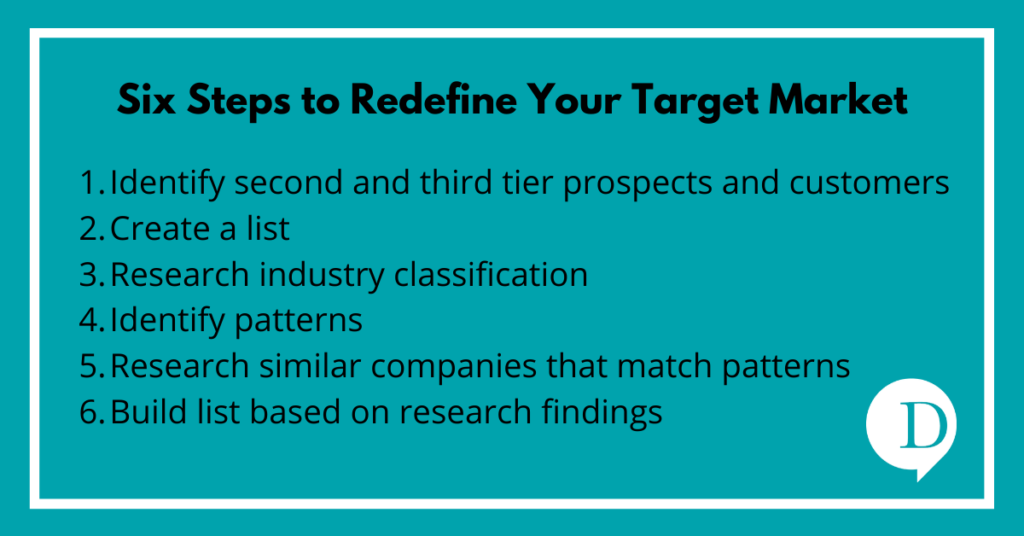What is Smart Calling?
A smart calling program incorporates the discipline of making prospecting sales calls with a plan. It’s having a targeted approach and a game plan that will guide you to a desired outcome.
A smart calling program has a plan that utilizes a known process that you can trust.

7 Steps to Your Smart Calling Program
The following are seven steps, developed by our team, that you and your team can follow as you prepare your own smart calling program:
- Data Records: clearly identify the businesses you want to call
- Common starting points are utilizing either a current customer list or an idle customer list
- If you’re building a fresh list, common list-building criteria are:
- Specific industry categories (such as SIC codes)
- Specific company sizes (revenue and/or employee count)
- Defined geography
- Identify the Decision Maker: know who the right person is you want to talk with; if this information is not available to you, know the proper title and/or department – in today’s environment, it’s also helpful to find out if this person is working in the office or remotely
- Messaging: prepare a message that is brief, quickly gets to the reason for your phone call, asks good qualifying questions, asks about current satisfaction levels, and defines their future plans
- Utilize Technology: have a data-capture tool, such as a CRM, that allows you to efficiently document the valuable information you gather, a tool that allows you to define and schedule next steps, and might allow you to send follow up emails
- Train: be properly skilled to make the phone calls, roll play, and practice. Record your live calls and listen to them and have peers listen to them
- If you are new to making business calls, don’t feel like you must be an expert – you do not. Prepare yourself to answer basic questions, and this will get you much further than you think. Remember, these calls are the beginning of the sales cycle, not the end
- Schedule: develop a schedule for making your smart calls and enter these times in your calendar. Create a schedule that is reasonable and achievable, then follow your plan and be patient
- Commit: trust your plan. If you do the work, you will start to see the results
If you follow the above steps, you will be implementing a smart calling program with a smart plan – a plan that is targeted specifically to a group of companies, some of which might become your future customers. There are common industry phrases that describe this type of work such as cold calling, telemarketing, teleprospecting, or lead generation. No matter what you call it, when it’s done properly, it is an excellent way to fill your pipeline with qualified prospect opportunities.
We live in odd times right now. Normalcy is something that people are looking for, an example of this is human-to-human conversation. With all of the bells and whistles that can come with sales and marketing, sometimes the simplest thing to do is call and have a conversation.
Dunlap Marketing has been in the business of building and conducting smart calling programs since 1996. Over the years, we have developed a process that we utilize with every client we serve. For more information on our programs, email Mike at miked@dunlapmarketing.com.




